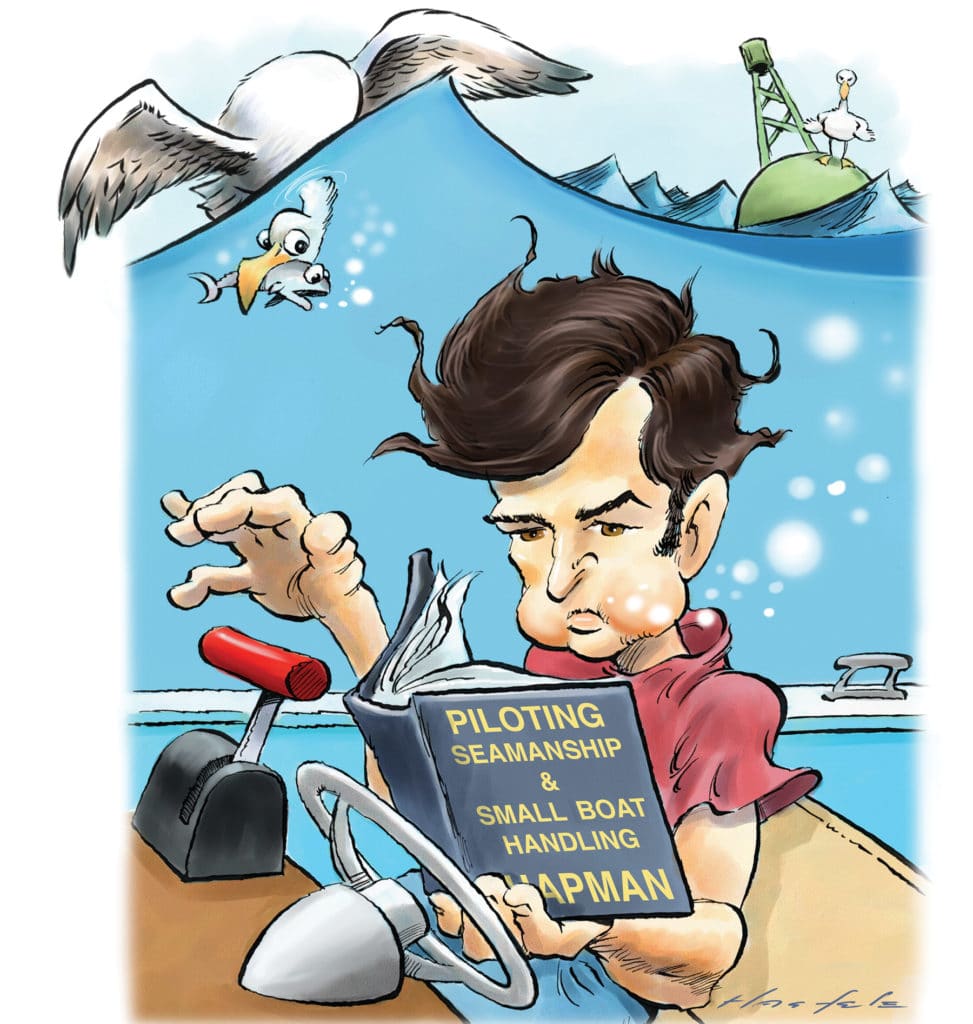
I typically delete emails with odd attachments, but a boating video with a freaky title from my pal Tom? I couldn’t resist. He’d been shopping for a 40-foot center console, so I figured the video was yet another victory-at-sea product pitch.
All seemed well at first, with the center console negotiating an inlet. Then a wave astern began to curl gently. The stern lifted. And the bow, instead of rising, subtly executed a swan dive.
Poof! Down she went. I recalled an illustration of a classic broach from my aged copy of Charles F. Chapman’s missive on seamanship. It’s bizarre how slowly, yet quickly, things can go south at sea.
Tom, an experienced yachtsman, offered his two cents: “It looked to me like the boat was a type with relatively flat after sections and a fine entry. She seemed a bit down in the tooth [the bow] as well.”
Her design may not have been ideal for inlet work, but ultimately, I said, it’s a skipper’s timing, judgment and awareness of his sled’s limitations that count. I confessed that I’d survived similar errors in judgment.
My first command was a 13-foot Boston Whaler. While the 13 was “unsinkable,” I did my best to prove otherwise. Call it stuffed, pooped or swamped, I’d filled her with an ocean of seawater, yet I’d bet that she remains unsunk today. It was all for amusement, of course. In such “emergencies,” I’d harness the entire team of her Evinrude’s 18 horses. Her bow would lift, and the seawater would flow past me like a river over her buoyant behind.
While the 13 was “unsinkable,” I did my best to prove otherwise. Call it Stuffed, pooped or swamped, I’d filled her with an ocean of seawater, yet I’d bet that she remains unsunk today.
After convincing my dad that I was trustworthy and responsible, I took the wheel of his 20-foot SeaCraft. I was instructed to stay inshore and well away from the inlet, an order that I ignored. I’d learned enough about boats and marketing to understand that “full flotation” did not necessarily mean sunny-side-up. I was more cautious with the SeaCraft, yet she could burp out a bellyful of seawater over her low-cut transom.
My 1981 25-foot Mako was among a new generation of larger center consoles with a closed stern. With plenty of deadrise aft and deep, slightly convex sections forward, she was great for running inlets. She had the horsepower to keep time with the seas, and while slogging in a trough, her trim angle was sufficient to prevent a face plant. This was a good thing, since her cockpit offered no quick escape for seawater. Her pair of 1-inch cockpit drains taught me to respect the sea.
The lesson was not forgotten when I moved up to a larger convertible design. Even though she had a cockpit transom door, I never invited the sea to pass through it. I balanced my vessel’s fuel load for sea conditions and avoided hot-dogging while backing down on fish. Transom or platform doors only keep the sea out if they’re closed.
Fortunately, a kid on a surfboard rescued the skipper in the video. To avoid such humiliation or worse, it’s best to keep the water where it belongs: in the sea.









